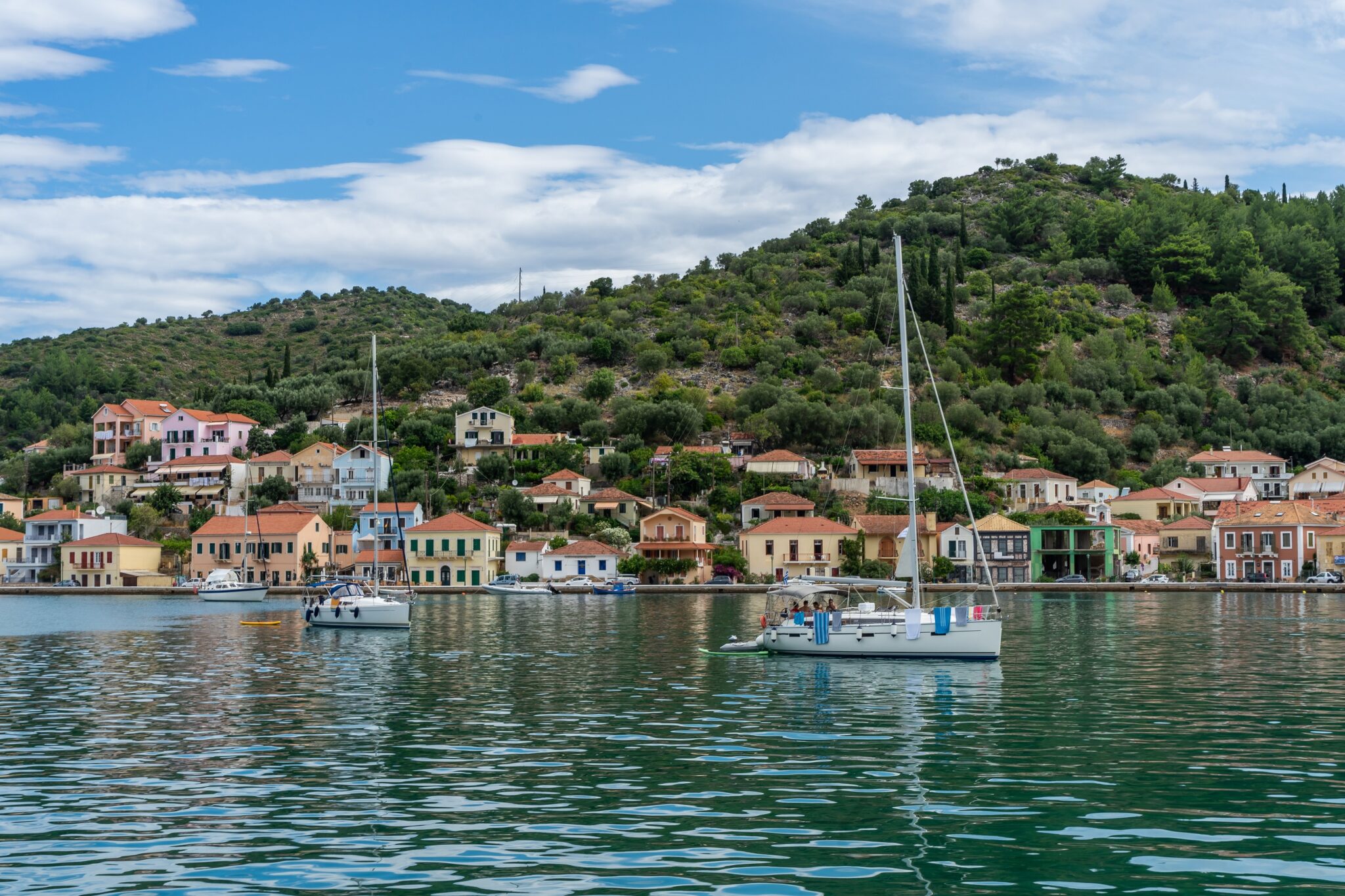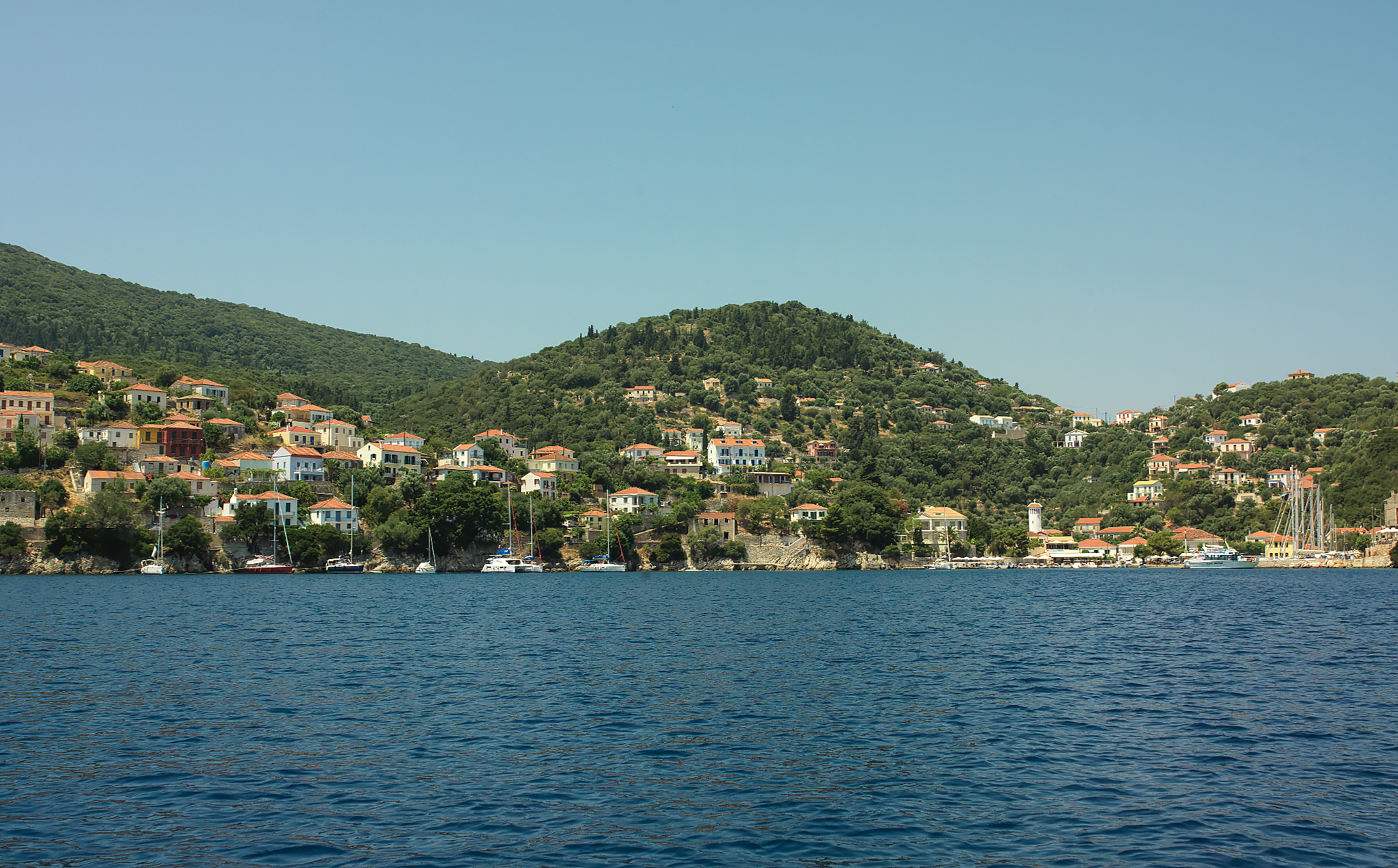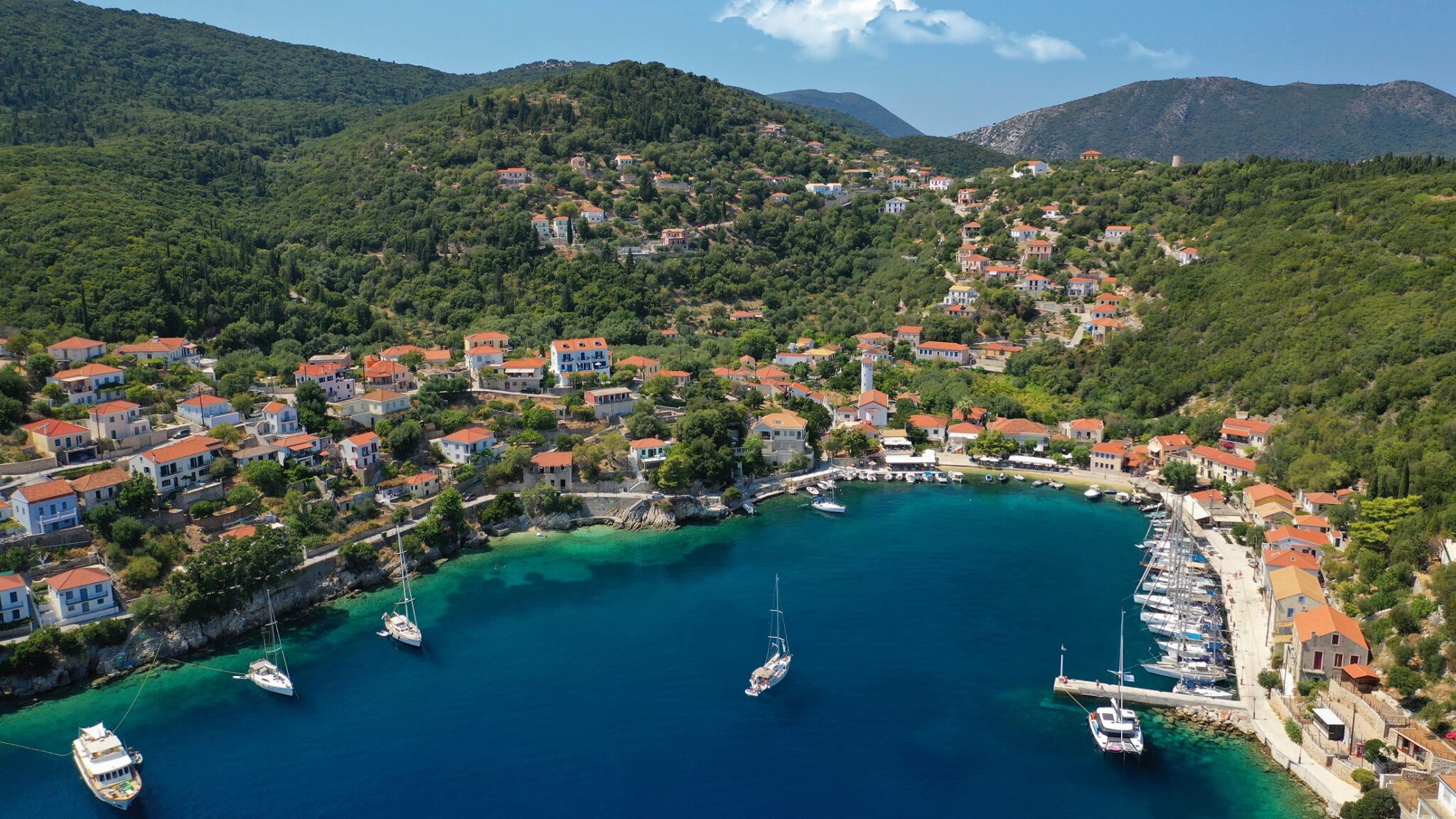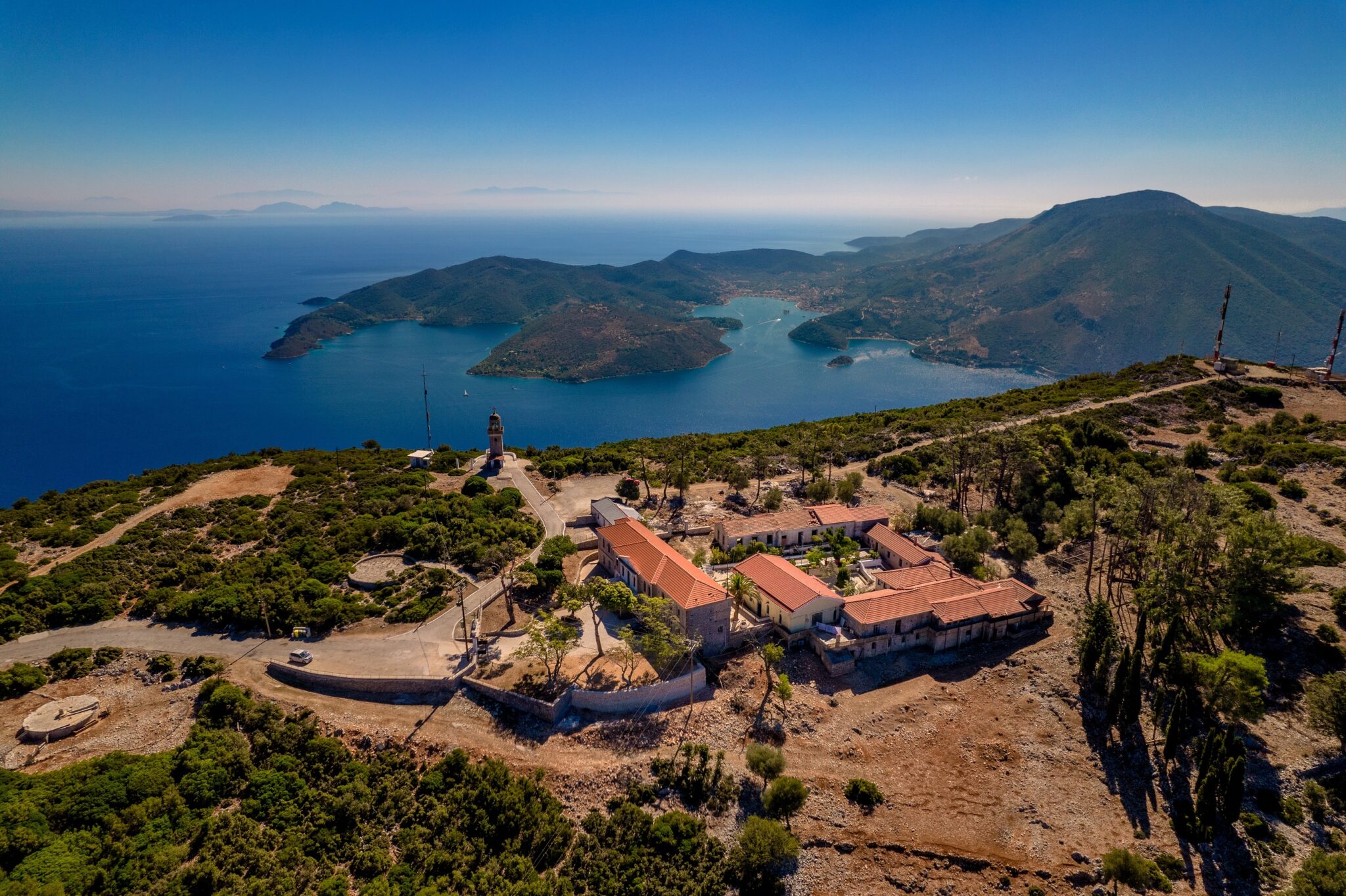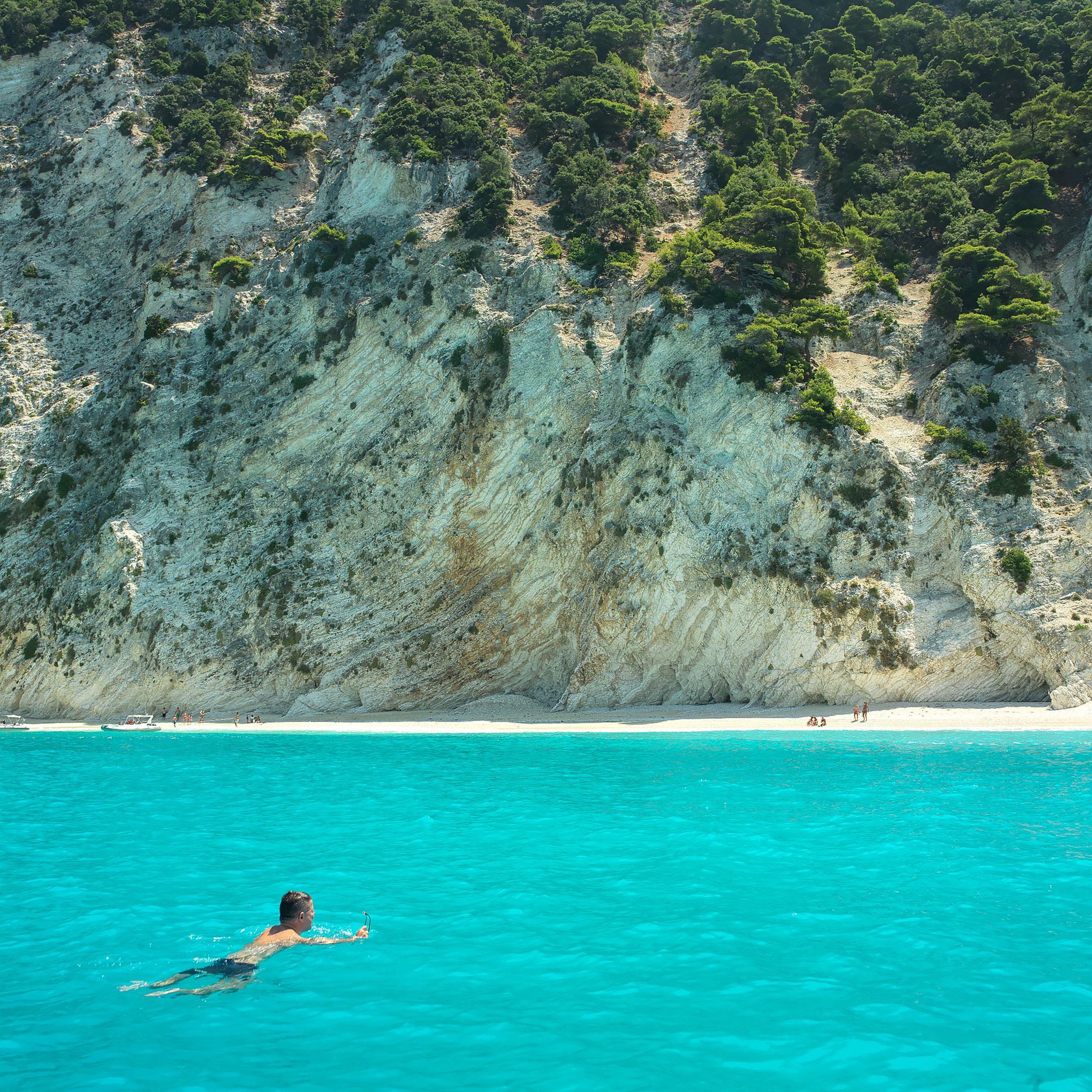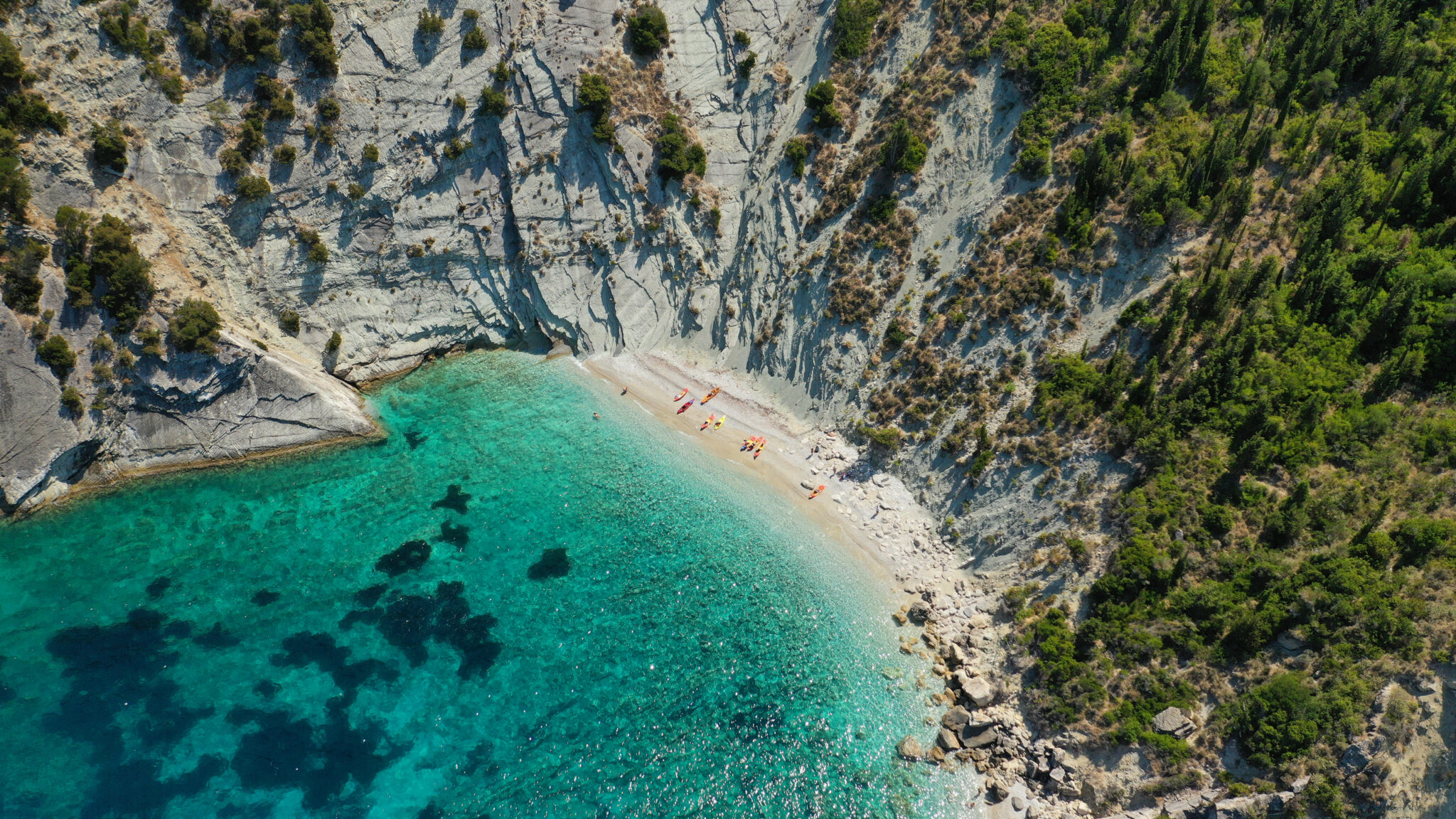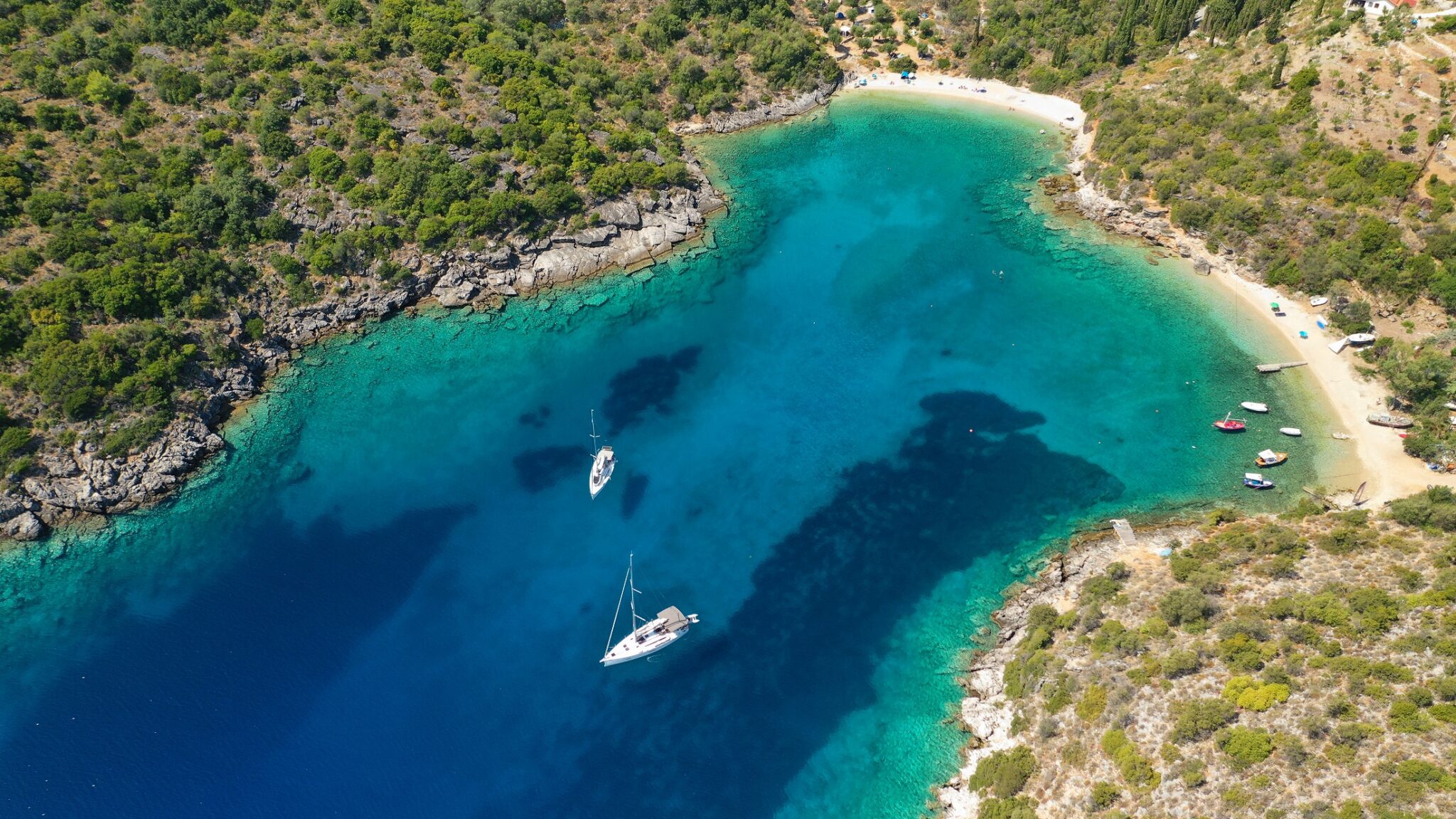Despite Constantine Cavafy’s poem “Ithaca” being probably the most famous Greek poem, George Seferis’ “Upon a Line Of Foreign Verse”, a much less known poem, is the one that brings the mighty king Odysseus to life in an intense, concise way.
And it seems to be the destiny of this small, verdant, island, below Lefkada, right next to Kefalonia, to never be entirely separate from the huge literary references to it. Since the Odyssey and right up to modern literature, the home of the cunning Odysseus remains the most myth-entwined island in Greece, abundant in ancients legends and cultural heritage, and also heavenly beautiful. It’s a land that you’ll never forget once you visit.
The lovely capital, cosmopolitan Vathi, with the tiny Lazareto island appearing to be a small boat at sea, across it, is located in the south of the island. Near it, some of the most popular beaches on the island, as well as the celebrated mountainous village Perahori that you must visit. And at the north, Kioni, the village that seems to have come off the most cosmopolitan and fine part of the south of Italy. Charming, elegant, with great nightlife.
And further up north, the endless Afales, the beach-jewel of Ithaki, reason enough to visit Ithaki, to swim in its cold, deep, turquoise waters, before visiting Odysseus’ palace that consists of some ruins and a stone door that overlooks the horizon, or “the unruffled blue sea”*, like Seferis writes. Ithaki is this unruffled, endless sea next to the tall pines, where Odysseus’ aura still lingers, telling us how to “build a wooden horse so (we) may win our own Troy.”*
What to do
Kioni
If you’re looking for a painfully cute island village, amphitheatrically built over the sea, then your first stop must be the charming Kioni, a lovely seafront village with stone houses and small blooming gardens. A traditional place with cute little authentic coffee shops and delicious food, as well as with elegant restaurants right next to the sea.
When the sun sets, the village’s warm, yellow lights turn on making the small, cosmopolitan shops in Kioni glisten, beautiful and fine, resembling famous resorts of the Italian south. There are yachts and boats moored at the marina and the nights are filled with the scents of the colourful flowers and the lush trees on the slopes of verdant Ithaki.
Vathi, a scenic capital
All roads lead, and probably start, from Vathi, the island’s gorgeous Hora and capital. It’s a charming settlement, straight out of a painting, built on a bay with turquoise waters, filled with traditional houses, small museums exhibiting local treasures, cute cafés and gourmet restaurants, and, of course, buzzing bars reminding everyone that despite the myth that surrounds it, Ithaki is a modern Ionian island.
At the seafront shops, you can spend a lovely night admiring the island of Sotiras, Lazareto, one of the best-known attractions of the island, so beautiful it seems unreal. On the tiny island there’s just one 17th century church, as well as one other building that was used as a quarantine station in the 19th century.
Kathara monastery
The monastery of Panagia Kathariotisa, the patron of Ithaki, and a pride and joy of the locals, is located 15km from the capital, at 600m altitude.
The monastery is built on mount Niritos, known from the reference to it in Homer’s Odyssey, while its name comes from the word “kathara” that means dry branches. According to legend, the people arrived at the spot trying to find the source of a bright shine, and upon arrival found some dry branches that they set to fire to clear the area, and that’s when the icon of Genesio tis Theotokou, that is held today in the monastery’s katholicon, appeared in front of them.
If you happen to be on the island in early September, it’s worth going to the monastery’s large festival that takes place on September 8. During the festival, the icon of Theotokos is passed over the sea and goes around the island’s villages to bless the entire island.
Odysseus’ palace
Endless stories, poems, and songs, as well as endless references and allusions both in Greece and the world, have been written and made based on Odysseus’ myth who was away from home for 20 years.
The legendary king of Ithaki is a symbol and the same can be said about his mythical palace that Homer described with such detail in the Odyssey, with one small “fun fact”: up until about 10 years ago, it was nowhere near certain that Homer was indeed referring to Ithaka in his saga. In fact, many researchers claimed that Homer was referring to another Greek island.
However, in 2010, the remains of a palace were discovered near the village Exogi in Ithaki, a building of two or three storeys, built on a rock. Archaeologists claim that the building complex included workshops, warehouses, a sewage system, as well as an underground water tank. In addition, in this location they also found a burial monument, and a well that date back to 1200 BC. There are many similarities between this building complex and other well-known Mycenaean palaces like the one in Mycenae, something that dates this palace to the time of the Trojan War.
Even though nothing has been found in the remains of the palace, now one of the most popular sights in Ithaki, that proves that a king named Odysseus lived here, Homer’s text remains so influential that no one would dare doubt it and ruin a lovely myth. After all, it is one of the most important archaeological findings in modern Greek history.
Ithaki’s villages
The crystal waters of Ithaki might be famed, and its seafront villages truly magnificent and scenic, but you must also visit some of the less known villages of the island, including Anogi, Frikes, Stavros, Exogi, next to the palace ruins, and Perahori, up in the mountain, all of which will reveal the island’s authentic nature.
Cave of the Nymphs
Continuing on your mythical pursuits, after visiting Odysseus’ palace, you need to stop at the Cave of the Nymphs, also known as Marmarospilia.
This otherworldly cave, at 190m altitude over the bay of Dexa (one of the most beautiful beaches of the island) seems to be the cave mentioned in Rhapsody N of the Odyssey, a place of worship of the Nymphs in antiquity. In fact, according to researchers, findings have made it clear that is indeed the same location.
You can only reach the cave via the modern-day entrance, on the paved street. You need to go down a staircase that takes you about 10m underground and you’ll reach an incredibly beautiful, out-of-this-world place covered in stalactites. The excavation findings are on display at the Archaeological Museum of Ithaki, in Vathi.
Where to swim
Filiatro
It’s the busiest, serviced beach on the island, and it has amazing waters that are perfect for snorkelling.
However, even though there’s a beach bar in Filiatro with sunbeds and umbrellas serving coffee and food, the beach is not good for families with small children as the large pebbles make it hard to walk on. You’ll need good, non-slip shoes, something that’s true for most beaches in Ithaki.
Platia Amos
One of the few sandy beaches in Ithaki, Platia Amos is in fact part of the famous and stunning beach Afales.
It’s not easy to get here, since you can only reach it by boat from Frikes or Kioni. However, when you arrive, the sight will reward you. The green-blue waters crashing softly against the white sand offer a truly magnificent sight. Make sure to bring an umbrella and lots of water as it’s not serviced, and shade is scarce.
Gidaki
Many claim that it’s the best beach in Ithaki, due to its beautiful waters. Gidaki is quiet, secluded but at the same time has many of the amenities of a fully serviced beach. There are umbrellas and sunbeds, as well as a canteen where you can get a coffee and a snack.
You get here by boat from Ithaki’s port, or you can drive to Skinos beach and then walk on a path within the pine trees, a truly unforgettable setting.
Afales
It’s one of the most instagrammable beaches on the island, and probably one of the most picture-perfect places in the Ionian Sea. It’s a virgin, gorgeous setting with steep white cliffs on one side and verdant slopes on the other.
In fact, some trees reach right next to the sea. Lie under the shade of the large cypresses and reflect on all the reasons Homer chose this rare place as the home of cunning Odysseus and the end destination of the Odyssey.
Skinos
Near the cosmopolitan capital of Ithaki, Vathi, there’s a laidback beach, easily accessible after a few minutes of walking on a dirt road.
There are tall trees on Skinos beach that reach the edge of the water, so, despite the availability of umbrellas and sunbeds, you can easily enjoy moments of rest and relaxation in the shade of the impressive palm trees next to the water.
Sarakiniko
Also, very close to Vathi, Sarakiniko beach is ideal for a quick afternoon swim, moments before the sun sets.
Walking from Hora towards Sarakiniko, you’ll first come across a small beach with a canteen but keep walking towards your right and you’ll find the larger, pebbled beach. There are no beach bars or umbrellas here, so make sure you’ve brought everything you need.
Local Gastronomy
As they say, “When in Rome…” and it’s really a pity to be in the right place at the right time and not experience everything the place has to offer you.
So, if you find yourself in Ithaki on a warm spring or a hot summer day, at a traditional restaurant by the sea, you can’t not try some of the unique sea mezze that the island has to offer.
It’s not a coincidence that seafood and fish lovers always leave Ithaki excited to have tried two celebrated dishes with octopus: octopus pie and octopus soup. In addition, in Ithaki you can have a great shrimp or cod pie, as well as lobster pilaf, calamari cooked in its squid, and a unique meze with grilled Mediterranean moray. You can also try sea urchin omelette, and an extremely tasty dish with small fish cooked with garlic, tomato and herbs. And for dessert, choose the famous local sweet called rovani, with clove, vanilla and lots of honey.
*translated by A.E. Stallings
Read also:
Samothrace: A complete guide to the most enigmatic Greek island
7 wonderful island villages in Greece
Lefkada: Complete guide to the picture-perfect Ionian Island



